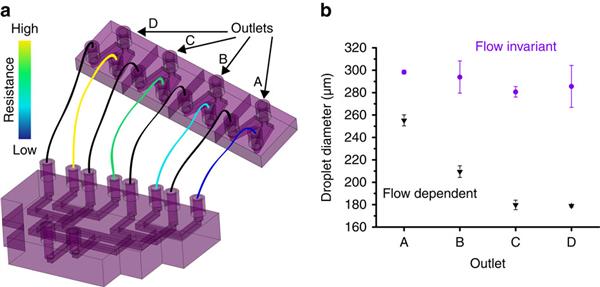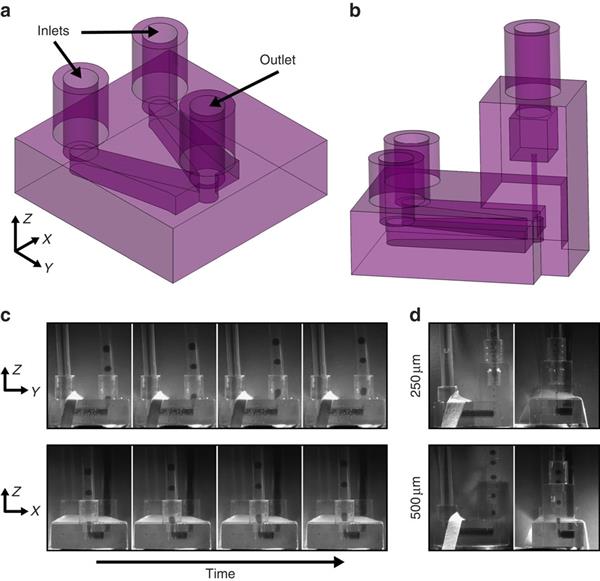With the power to use unique materials for specialty applications, nanoparticles open up entirely new physical properties for the objects around us. In 3D printing, we’ve often seen these particles, 100,000 times smaller than the width of a human hair, mixed into conductive inks for electronics 3D printing, particularly by companies like Voxel8 and Nano Dimension. One big issue with these tiny materials, however, is the inability to scale up production for widespread use.
Manufacturing nanoparticles requires batch production that is both expensive and time consuming, but, now, researchers at the USC have published new research detailing the large-scale production of these powerful particles. To pull it off, the team, led by Noah Malmstadt of the USC Viterbi School of Engineering and Richard Brutchey of the USC Dornsife College of Letters, Arts and Sciences, created what they believe to be the smallest, fully enclosed 3D printed tubes anywhere in order to build an entire nanoparticle mixing station.
Malmstadt and Brutchey tell USC News just how difficult and expensive it can be to make nanoparticles. For instance, gold nanoparticles can cost $80 for a single milligram, adding up to $80,000 for a gram. A gram of pure, raw gold, however, has a price of just $50. Malmstadt explains, “It’s not the gold that’s making it expensive. We can make them, but it’s not like we can cheaply make a 50-gallon drum full of them.”
The cost is associated with the time it takes for a technician to mix the materials up in a lab by hand, using flasks and beakers. To break this model, the team turned to microfluidics, 3D printing tubes 250 micrometers in diameter and assembled in a parallel network of four tubes. They then ran two nonmixing fluids through the network, which, due to their non-mixing nature, had to compete to exit openings in the setup. This resulted in the formation of tiny droplets that forced the materials to mix together via chemical reaction and create nanoparticles. Because each 3D printed tube can create millions of identical droplets, Brutchey and Malmstadt had essentially built a microfluidics factory.

3D printing played a key role in the construction of these tiny tubes, just 5 times the diameter of a speck of dust. In the past, such a microfluidics system was impossible, as jamming that might occur in one tube would consequently jam those connected in parallel. But by 3D printing unique geometries into the tubes, the junctions between tubes were designed to prevent an reaction to such pressure changes, allowing for the particles to come out in uniform size.

As one might guess, this new platform for the production of nanomaterials could result in a reduced cost in these unique materials overall. Soon, maybe we’ll see companies like Nano Dimension and Voxel8 take a cue from these researchers and develop their own microfluidics factories. This, in turn, will fuel the global nanomaterials industry, which is expected to grow from $3.4 billion in 2015 to $11.8 billion by 2020.


